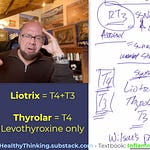Two-sentence executive summary:
The human body is inherently acid-producing via several high-volume metabolic process including the metabolism of 1) carbohydrates (lactic acid), 2) fats (acetoacetate, beta-hydroxybutyrate), 3) protein (sulfuric acid), and 4) chloride. The resulting endogenous metabolic acidosis needs to be counterbalanced by dietary alkalinization.
The popularity of the idea of influencing body pH (acid-base balance) has periodically risen and fallen over many decades, but its popularity (or lack thereof) is no indication of its validity. Nor can one expect popular medical opinion to be of much value on this topic, when 1) medical doctors receive essentially zero training in Nutrition, and when 2) the medical profession as a whole is constantly denigrating and confusing the topic of diet, Nutrition, and nutritional supplementation. If we want clarity, we have to look at the real science—not at popular opinion, not at medical dogma. The real science on this topic has become increasingly clear over the past 20 years. Several landmark publications have guided my line of thought on this topic; these are mentioned in the accompanying videos while the first and one of the most powerful articles (Proudfoot, et al, 2004) is summarized in the paragraph that follows.












